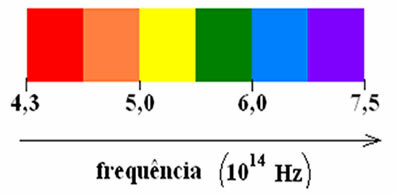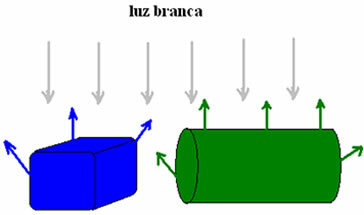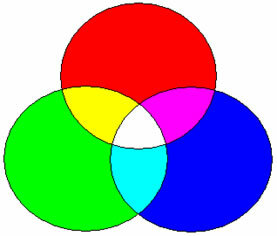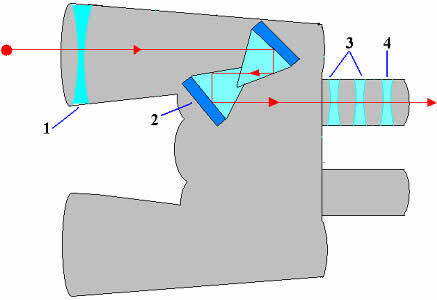Every day, we come across different types of objects, such as cars, motorcycles, bicycles, people, etc. We can see that some objects have the same shape, same size, but sometimes what differentiates them are the colors. This proof can also be seen in people's clothes, in the colors of their homes and especially in traffic lights.
Depending on the emitted frequency and also on the characteristics of the material, a body may or may not absorb a certain amount of energy.
The colors of things are determined by the frequency of light. Let's look at the illustration below, which provides us with a table identifying the main frequencies of light.

When we see the light emitted by the Sun, we are seeing a sum of colors, that is, the White light is the sum of some basic colors. If we illuminate a opaque object with white light, we'll see that some of that light is absorbed and another part is reflected.
Thus, when we see a dark-colored object (black object), we can say that this object is absorbing all the light that falls on it. On the other hand, when we see a light object (white color), we can say that it is reflecting all the light that falls on it..
Among this color variation (white and black), we have objects that absorb some colors and reflect others. In this way, we have several objects with a lot of different colors.
Let's look at the following figure. In it, there are two objects of different colors, a blue object and a green object.
Do not stop now... There's more after the advertising ;)

According to the figure above, we illuminate two objects with White light, and both objects absorb all colors, except the blue light and the green light, respectively. Since they are not absorbed, blue light and green light are reflected in all directions (diffusely) making the first object blue and the other green.
To the we observe the color spectrum, we'll notice that there aren't all the colors we know or are used to seeing there (we don't see, for example, beige, pink, etc.). The different colors we see on a daily basis are obtained from the different mixture of basic colors.
Let's see in the figure below the colors that we acquire when we add the primary colors:

We can find light sources that do not emit the basic colors. Therefore, objects that are illuminated by this type of light source have colors that are totally different from the colors they would if they were illuminated by a white light source (sunlight).
By Joab Silas
Graduated in Physics
Would you like to reference this text in a school or academic work? Look:
JUNIOR, Joab Silas da Silva. "Colors and the frequency of light"; Brazil School. Available in: https://brasilescola.uol.com.br/fisica/cores-2.htm. Accessed on June 27, 2021.
Physics

Did you know that pure water is not colorless as they say? In fact, water has a slightly bluish hue, resulting from the process of absorption of light incident on it. In this process, the liquid is able to absorb longer wavelengths of light, such as red and orange.
Physics

Do you know what the speed of light is? In a vacuum, light can travel at a speed of 299,792,458 meters per second. To this day, nothing is known to be able to move faster than her. The speed of light does not depend on its emitting source, nor on its observers, but exclusively on the medium in which it propagates.



